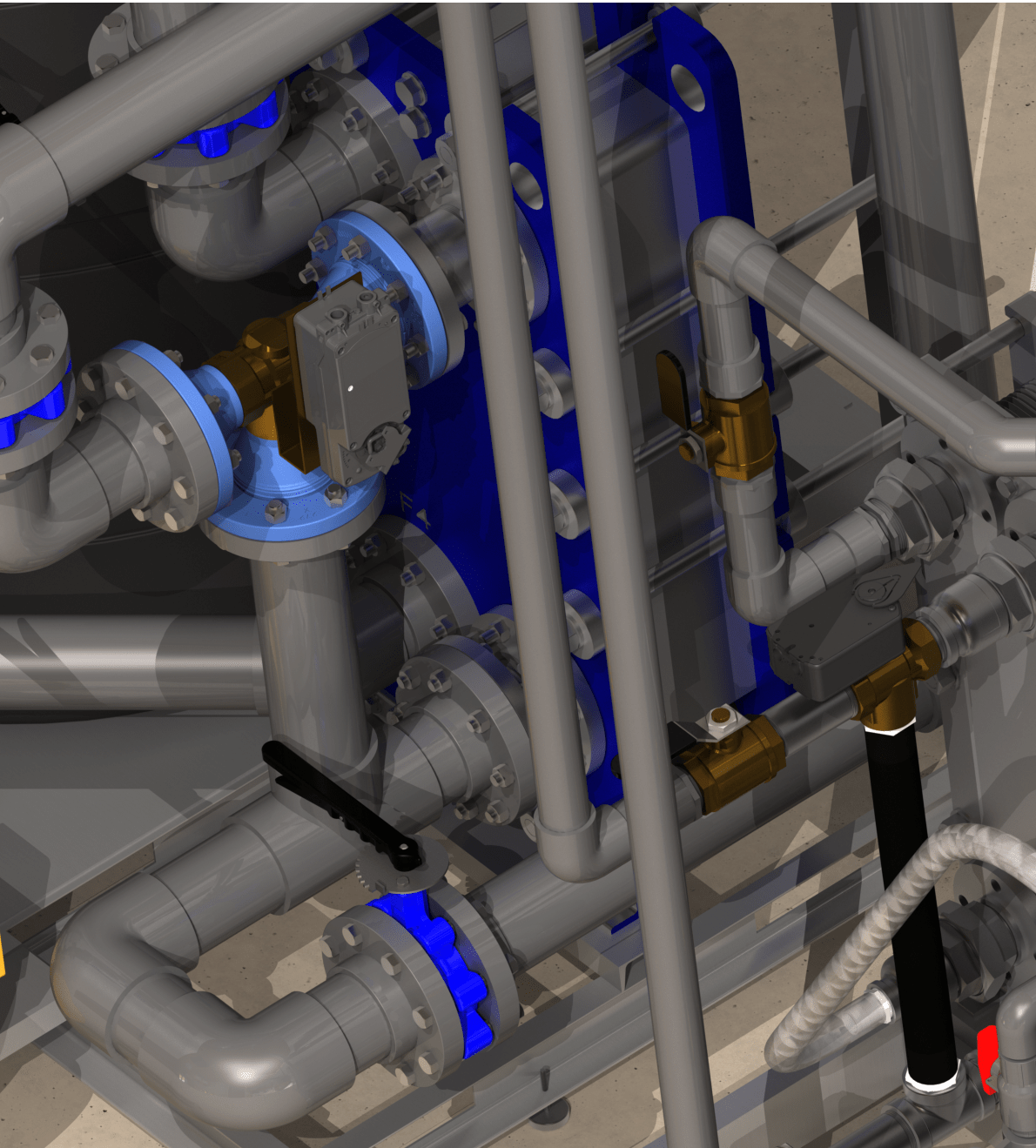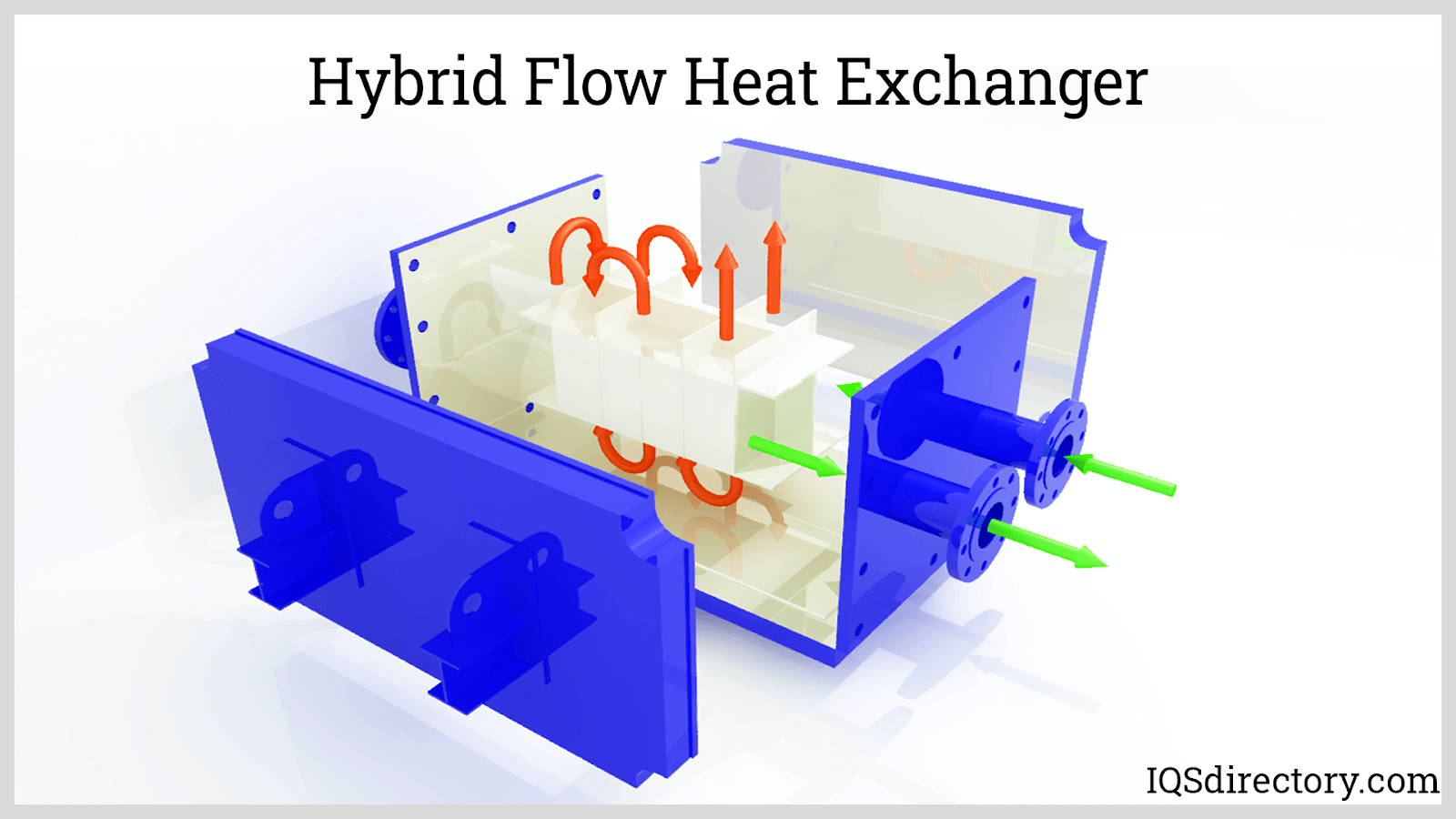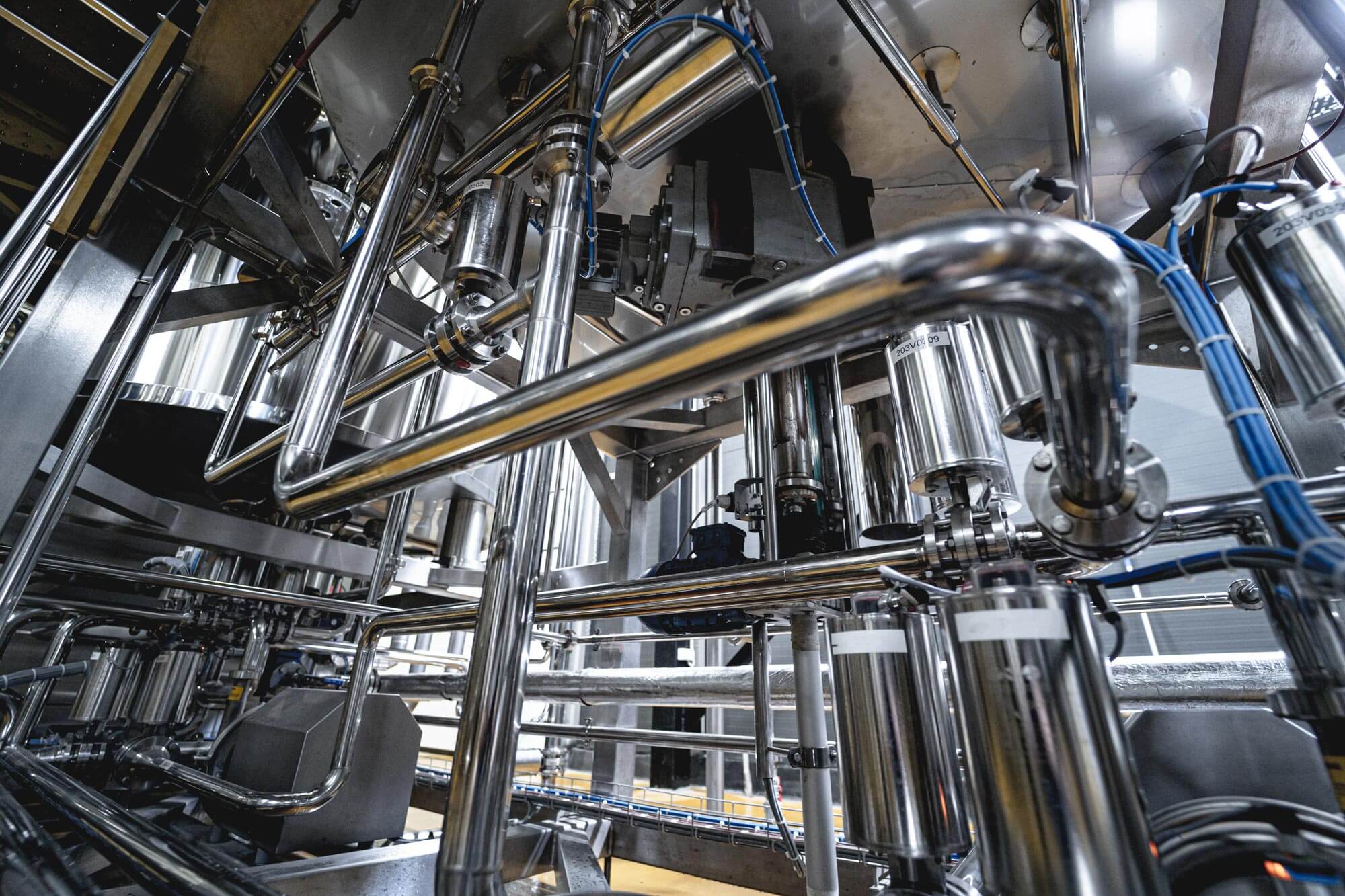Can DVS Heat Transfer Systems Help You Meet Environmental Compliance Standards?
Wiki Article
A Comprehensive Guide to Picking the Right Heat Transfer Systems for Your Needs
Selecting the proper Heat transfer system is important for functional performance. Different systems deal with different demands, influenced by aspects such as temperature array and fluid kind. Comprehending the principles behind Heat transfer, such as convection, conduction, and radiation, is essential. Additionally, reviewing power sources and upkeep methods can influence lasting performance. A closer exam of these considerations discloses exactly how to tailor a system to details requirements. What should one prioritize in this complex decision-making process?Understanding Heat Transfer: Trick Concepts and Concepts
Heat transfer might appear like an uncomplicated concept, it incorporates an array of concepts that are fundamental for effective system design - DVS Heat Transfer Systems. Recognizing these principles is essential for designers and designers that intend to optimize thermal performance in various applications. Conduction, for example, entails the transfer of Heat with strong materials, while convection refers to the motion of Heat within liquids. Radiation, another essential principle, describes how Heat can be transferred with electromagnetic waves. Each of these systems plays a crucial function in establishing just how power relocates within a system. By extensively realizing these ideas, experts can make informed decisions, making certain that Heat transfer systems operate efficiently and meet the details demands of their applications
Kinds Of Heat Transfer Equipments: A Review
Recognizing the concepts of Heat transfer lays the foundation for checking out the various sorts of Heat transfer systems readily available. Heat transfer systems can be categorized mostly into 3 kinds: conduction, radiation, and convection. Transmission entails Heat transfer through strong products, depending on straight call between particles. Convection, on the various other hand, takes place in fluids (gases and liquids) where the activity of the liquid itself assists in Heat transfer. Radiation entails the transfer of Heat through electromagnetic waves and does not require a tool, enabling it to occur in a vacuum. Each kind of system has distinct features and applications, making it vital for individuals and organizations to meticulously analyze their certain requirements when picking the most ideal Heat transfer remedy.Applications of Heat Transfer Solutions in Numerous Industries
Heat transfer systems play a crucial function throughout various sectors, affecting efficiency and product top quality. In industrial production processes, they assist in precise temperature level control, while in food and drink processing, they ensure safety and security and preservation. In addition, heating and cooling and climate control systems depend greatly on efficient Heat transfer to maintain comfortable settings.Industrial Production Processes

Many industrial manufacturing processes count greatly on reliable Heat transfer systems to optimize productivity and enhance product quality. In sectors such as metalworking, Heat exchangers play a vital duty in maintaining optimal temperatures during welding, spreading, and building. These systems guarantee uniform Heat distribution, which is vital for achieving wanted material residential or commercial properties. In the chemical manufacturing industry, Heat transfer systems facilitate accurate temperature control during reactions, impacting yield and safety and security. Additionally, in textile manufacturing, reliable Heat administration is very important for coloring and finishing processes, influencing shade uniformity and textile high quality. By choosing appropriate Heat transfer innovations, manufacturers can enhance energy effectiveness and lower functional expenses, inevitably causing a much more sustainable and affordable manufacturing environment.
Food and Drink Handling
Effective Heat transfer systems are equally vital in the food and drink processing market, where preserving ideal temperatures is crucial for food safety and security and high quality. These systems play a crucial function in processes such as pasteurization, sterilization, and food preparation, making sure that products are secure for consumption and maintain their nutritional value. Heat exchangers, for instance, successfully transfer Heat between liquids, enhancing power use while minimizing temperature fluctuations. Additionally, refrigeration systems are fundamental for preserving disposable items and expanding life span. The choice of Heat transfer modern technology directly influences operational efficiency and product integrity, making it important for food and drink suppliers to select the suitable systems tailored see this page to their details handling needs. This careful choice eventually adds to customer fulfillment and food safety and security.
HVAC and Climate Control
While numerous sectors count on Heat transfer systems for performance, HVAC (Home Heating, Air Flow, and Air Conditioning) plays an essential role in maintaining interior environment control across different settings. These systems use Heat transfer principles to control moisture, temperature, and air top quality, guaranteeing comfort and safety and security in property, commercial, and commercial environments. Properly developed a/c systems improve energy performance, minimize functional expenses, and decrease ecological impact. In industrial buildings, for example, reliable environment control adds to employee productivity and client satisfaction. In industrial applications, a/c systems assist keep optimal problems for devices operation and product conservation. Picking the appropriate Heat transfer system is important for conference details environment control needs and attaining overall system performance.Reviewing Power Resources for Heat Transfer Solutions
In examining power sources for Heat transfer systems, a contrast of renewable energy alternatives and fossil gas considerations is vital. Eco-friendly resources, such as solar and wind, deal sustainable alternatives that can reduce environmental impact. Alternatively, nonrenewable fuel sources remain prevalent because of their recognized infrastructure and power thickness, prompting a careful evaluation of both options.Renewable Power Options

Fossil Gas Considerations
Reviewing fossil fuel considerations is crucial for the performance and sustainability of Heat transfer systems. Nonrenewable fuel sources, such as all-natural gas, oil, and coal, are standard energy resources that provide significant Heat result, making them prominent choices for industrial and residential applications. Nonetheless, their ecological effect, including greenhouse gas exhausts and resource deficiency, raises issues. When picking a warm transfer system, it is essential to evaluate the schedule, price, and regulatory variables related to these gas. Additionally, the effectiveness of fossil gas systems must be considered, as higher performance can mitigate some environmental downsides. Ultimately, a well balanced strategy considering performance and sustainability can direct decision-makers towards the most ideal Heat transfer remedy for their specific requirements.Aspects to Consider When Selecting a Warm Transfer System
Selecting a suitable Heat transfer system calls for mindful factor to consider of various variables that can substantially influence effectiveness and performance. One crucial factor is the operating temperature variety, which dictates the products and design appropriate for the application. Additionally, the type of liquid used in the system-- whether gas or liquid-- affects Heat transfer effectiveness and compatibility. The system's size and ability must align with the particular demands of the procedure to prevent inadequacies. Power resource schedule is likewise necessary, affecting operating expense and sustainability. The installation setting, consisting of space constraints and ease of access for maintenance, plays a significant duty in system selection. Regulatory conformity and security standards should be thought about to guarantee the system satisfies all lawful needs.Upkeep and Performance Optimization for Heat Transfer Solutions
Maintaining Heat transfer systems is vital for guaranteeing optimal effectiveness and long life. Routine maintenance tasks, such as cleaning up Heat exchangers and inspecting insulation, help protect against effectiveness losses due to fouling and thermal connecting. Additionally, checking system parameters, including stress and temperature, enables early discovery of abnormalities, minimizing downtime and expensive fixings. Executing a preventative maintenance timetable can optimize performance and expand the life expectancy of components. Upgrading to advanced control systems can boost operational efficiency by readjusting to varying tons and conditions. By focusing on maintenance and effectiveness optimization, operators can accomplish lowered energy usage, lower functional costs, and enhanced general system integrity, inevitably causing better resource use and an extra lasting operation.Future Patterns in Heat Transfer Technologies
As sectors click here to find out more progressively focus on sustainability and power performance, future trends in Heat transfer technologies are set to undergo significant improvements. Developments such as advanced products, consisting of carbon nanotubes and nanofluids, assure boosted thermal conductivity and performance. Furthermore, the combination of renewable resource resources right into Heat transfer systems is gaining energy, promoting environmentally friendly services. Smart innovations, including IoT sensing units, are anticipated to reinvent tracking and control, enabling real-time information evaluation for optimized efficiency. The development of small and modular systems will certainly assist in easier installment and maintenance, catering to varied applications. These innovations indicate a shift in the direction of even more sustainable, effective, and adaptable Heat transfer services, straightening with international power goals and ecological requirements.
Frequently Asked Questions
What Are the Environmental Influences of Heat Transfer Systems?
The ecological impacts of Heat transfer systems can include greenhouse gas discharges, energy intake, and potential thermal contamination. Furthermore, inappropriate disposal of materials and inadequacies can add to resource exhaustion and ecosystem interruption.Exactly how Do I Compute the Cost-Effectiveness of a Heat Transfer System?
To determine the cost-effectiveness of a warm transfer system, one should examine initial costs, functional expenses, maintenance needs, and energy effectiveness, contrasting these variables against the expected life-span and performance of the system.Can Heat Transfer Solution Be Made Use Of in Residential Setups?
Heat transfer systems can undoubtedly be made use of in residential settings. They give effective home heating and cooling down remedies, making homes extra comfy while potentially decreasing power expenses. Their flexibility enables for various applications in property atmospheres.What Safety And Security Rules Relate To Heat Transfer Systems?
Safety and security regulations for Heat transfer systems commonly consist of standards on upkeep, operation, and installation. Conformity with regional building codes, maker specifications, and market standards is important to ensure risk-free and effective system performance in various applications.Just How Do Different Materials Affect Heat Transfer Performance?

Conduction, for instance, involves the transfer of Heat through solid materials, while convection refers to the movement of Heat within fluids. Comprehending the principles of Heat transfer lays the groundwork for discovering the various types of Heat transfer systems readily available. Heat exchangers, for circumstances, effectively pop over to this web-site move Heat between fluids, optimizing energy usage while minimizing temperature fluctuations. In assessing energy resources for Heat transfer systems, a contrast of eco-friendly power choices and fossil fuel factors to consider is essential. Metals, such as copper and light weight aluminum, conduct Heat successfully, whereas insulators like rubber and glass reduce down Heat flow.
Report this wiki page